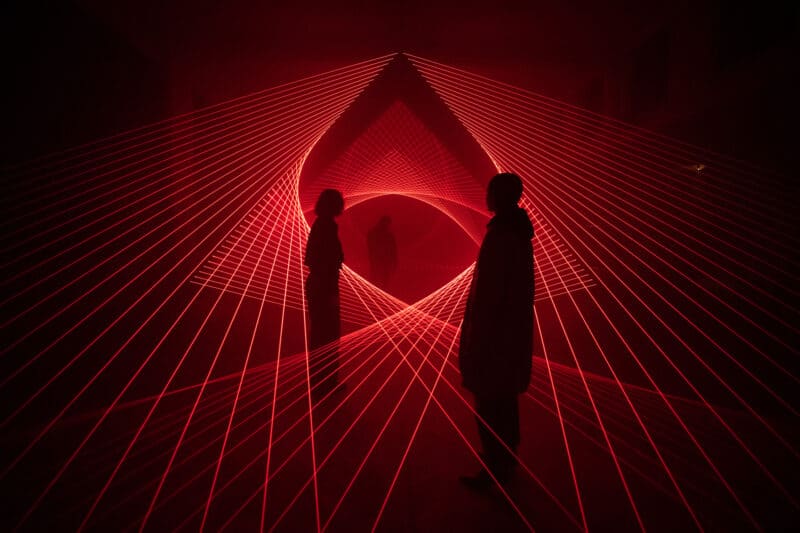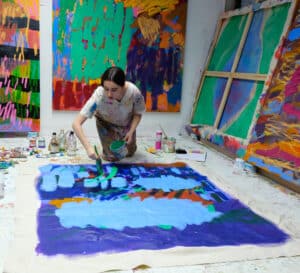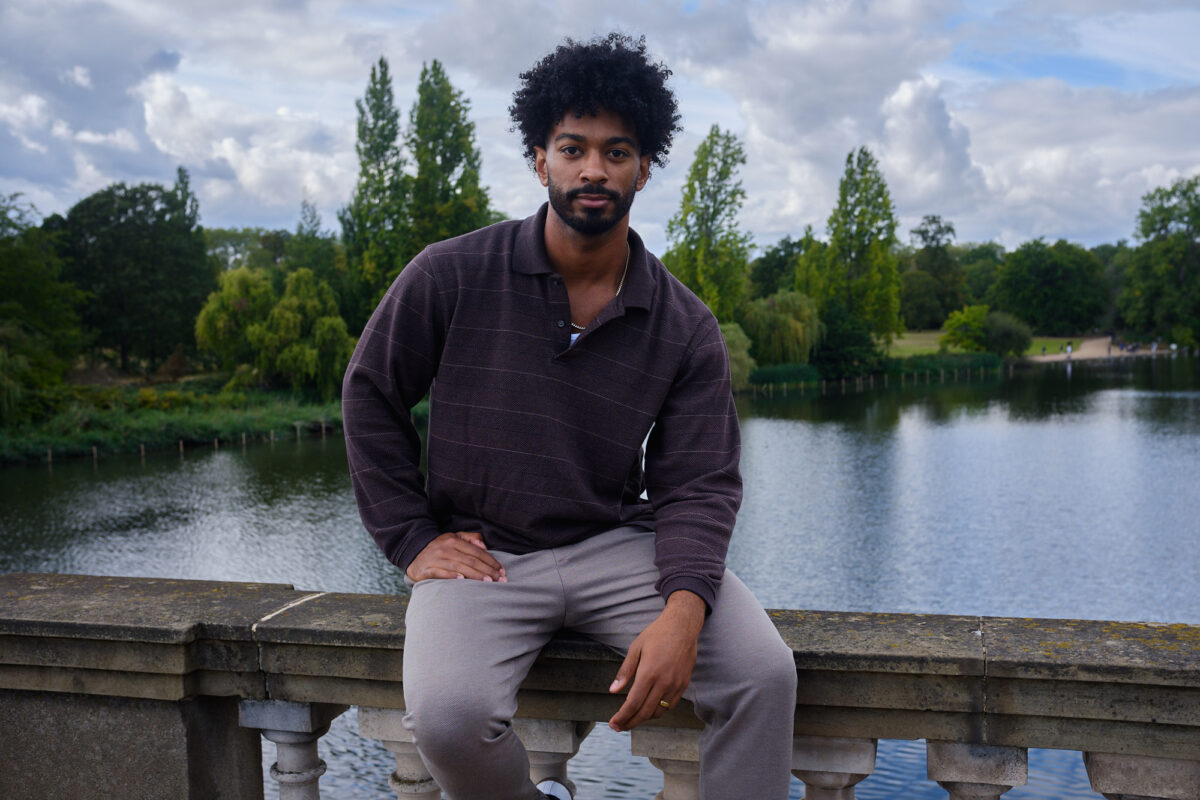
Born in the Dominican Republic and currently based in Philadelphia, US. Raelis Vasquez is a figurative artist. With a BA from The School of the Art Institute of Chicago and an MFA from Columbia University.
In his latest solo exhibition at PM/AM, he delves into the relationship between water and the inhabitants of his childhood hometown, El Pueblo de Dios, situated in the city of Mao, Valverde province.

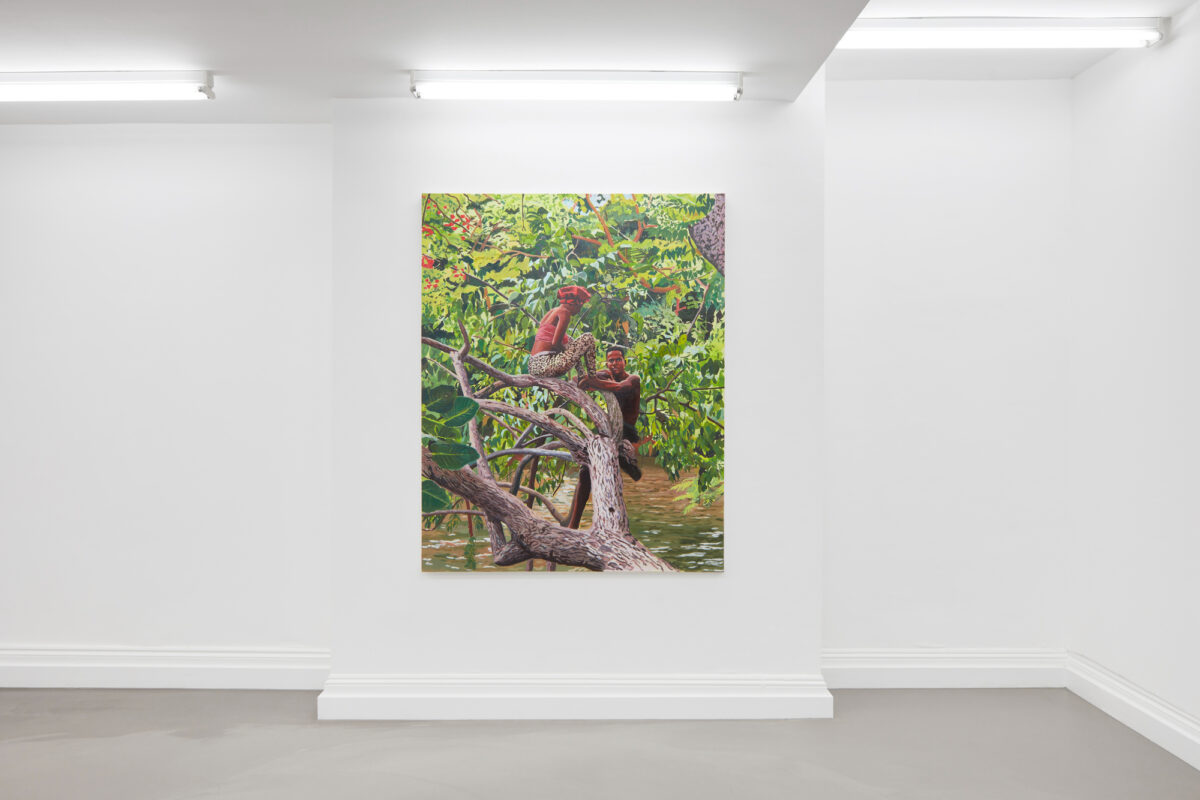
Chard Adio: Firstly, these paintings are massive—they are really big. The detail as well is extremely impressive. What was the process when it came to creating these works?
Raelis Vasquez: Thank you! The inception of the work goes back to the beginning of the year. I began working on the largest piece of the show, which is 5ft x 8ft, over a year ago. That piece was the catalyst for the show because I started to think about the rivers in my hometown from that piece. So as a whole, these works took me about a year to finish, and it was an organic process.
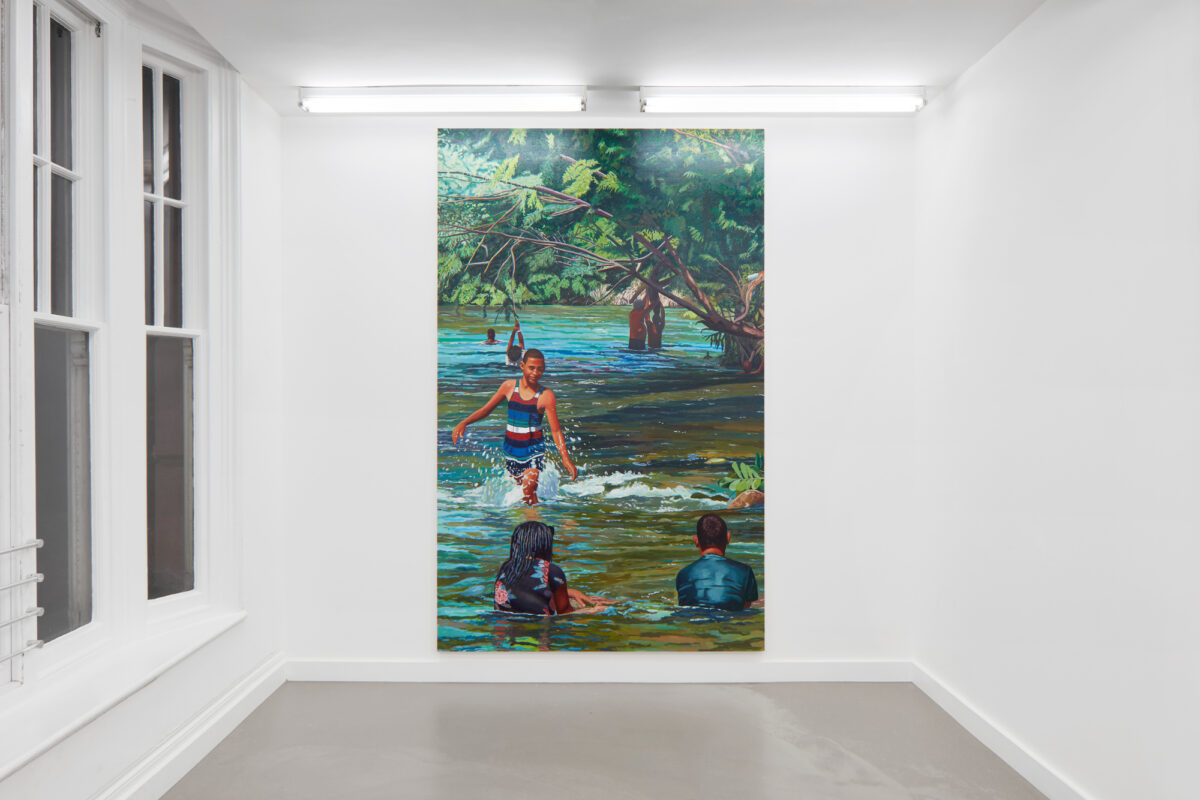
CA: When it comes to the figures we see in the work, what were your references, if you take Lynette Yiadom-Boakye her figures come from her imagination—they are fictitious. So is it a similar process? Or do you use photographs? Or do you use your memories of certain people as an aid to create these figures we see in the work?
RV: The works come about through documentation, and it plays a pivotal role in my process. Whether I am in the Dominican Republic or somewhere else, I make it a habit to meticulously document my surroundings through a series of photographs, sketches, and written notes. When I return to my studio, these materials form the foundation for my artistic collage. By selecting diverse compositions and considering aspects like colour temperature, I carefully piece things together, and constantly ask myself, “will this make a good painting?”, “Is the composition I’ve created strong enough?” Or “Is the story I’m telling in this piece interesting?”
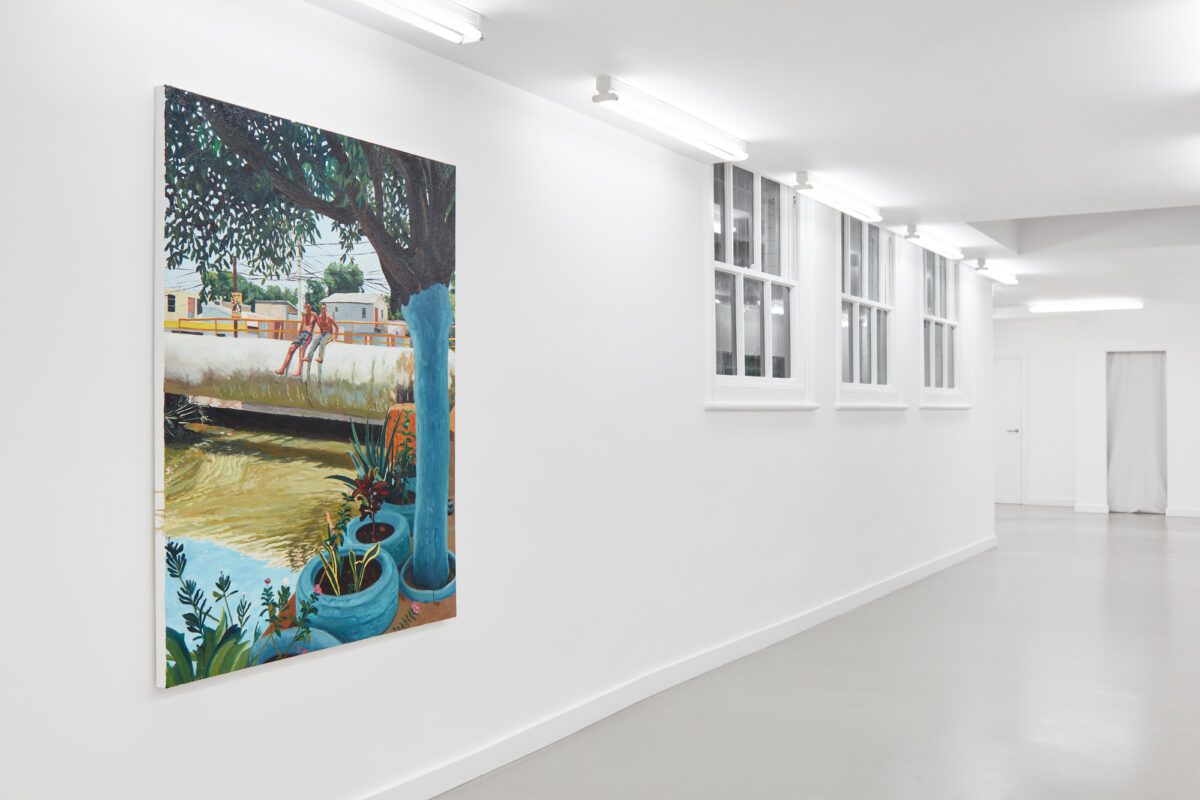
CA: When I look at the figures in these works, I sense this vulnerability, and it’s definitely a key aspect of your practice. What’s the reason behind this?
RV: Ensuring the work conveys this vulnerability is something that is very important to me because I often paint images of my family members. With every painting, I want to present things as naturally as possible, because to me vulnerability is this state where you don’t have to pretend to be someone you’re not—it’s almost as if you’re taking off this mask or veil. If I’m entering this state when I create the work, then I need to ensure my audience leaves feeling that way too—I need to translate that state into the work. I think feeling vulnerable when you see art allows you to think more deeply about the work. So when people see these pieces, I hope they ask themselves questions such as “What’s the history of this place?”, and “What are the people’s experience here?”. When it comes to the work, I always look within, a sort of self-examination, because before I think about the viewer, I think to myself, “does this resonate with me?”
CA: From what you’ve just said it feels like the work is also introspective too. It’s very personal. You’re looking inward and expressing that in the works we see.
RV: Absolutely! I think a lot of the works are responses to questions that I can’t even answer. They’re almost this vehicle that allows me to navigate through these questions. So my experiences immigrating to the US, and concepts like Blackness, family, masculinity, and the Dominican Republic—all of these play into my introspective process.
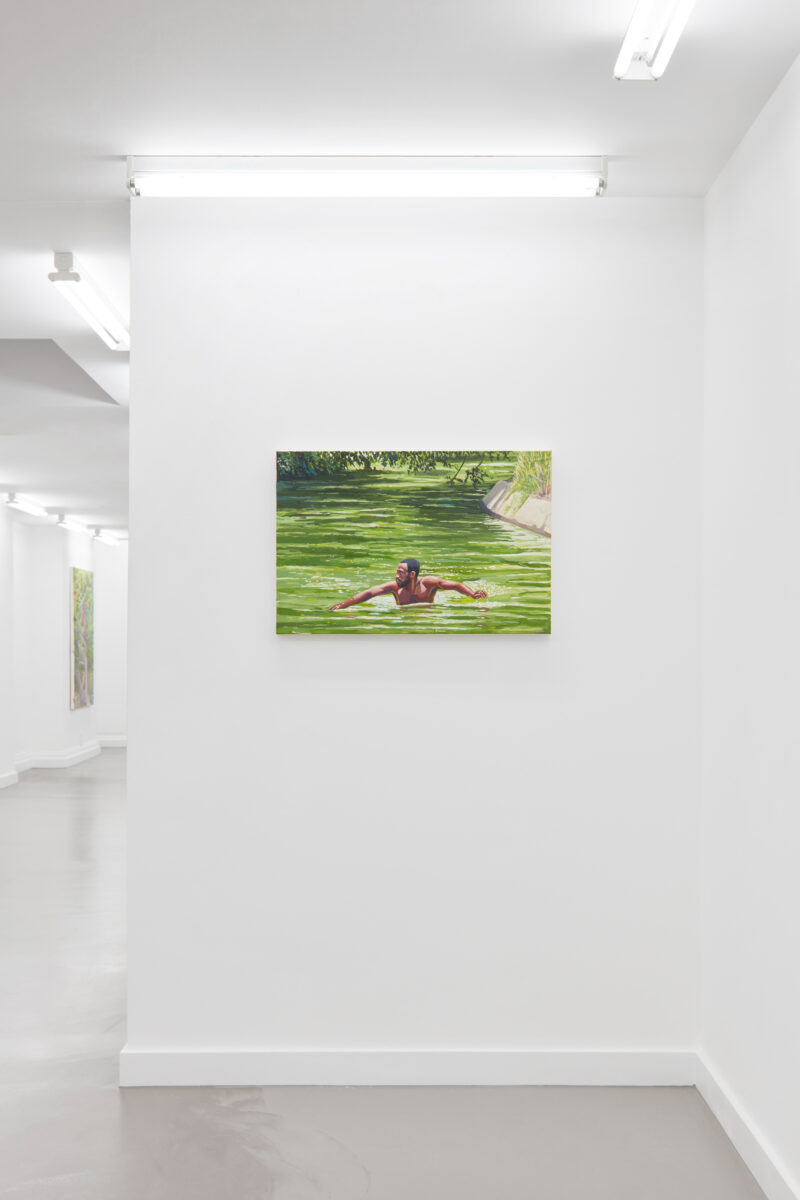
CA: “El Pueblo de Dios” and the theme of water are central to these works. Can you tell us more about the significance of this place, and how it ties into the water theme?
RV: “El Pueblo de Dios” is where my parents and I are from—a small neighbourhood in Mao, Valverde province. It was an isolated area with only seven homes, there were unpaved roads, and it had a countryside feel. When the water systems would go out or the electricity would go off, we would turn to the river as our source of reserves, so that was how the river became important to us—it became this necessity. Also, the proximity to the river’s source and the city’s name, “Mao,” meaning “land between rivers” in Taíno, further highlight the intrinsic connection between the community and water.
CA: I also see a lot of greenery in these pieces—nature is very present in the work. Was this a deliberate choice or something that came about unconsciously?
RV: It was definitely a deliberate choice. In recent years, I’ve been focusing on portraying things based on how they feel. For instance, if you were in a river, you would feel small compared to the surrounding greenery. I wanted to visually capture that sensation in the work. So in some compositions, I made the figures appear distant to emphasise the scene’s magnificence.
CA: Did you feel you were also exploring your own personal journey of migrating from the Dominican Republic to the US while creating these paintings? Because such a migration between two vastly different countries must have shaped who you are as an artist?
RV: Yes I would say so, and I think that introspection allowed me to also explore the Afro-Latinx experience. Because as a child, and even into my teens, I questioned my Afro-Latino identity. When I came to the US, I saw the idea of a Latino to be extremely simplified, that nuance was completely stripped away. Immigrating to the US had a profound impact on me. Because one afternoon you go from living in the Dominican Republic to all a sudden being in New Brunswick, New Jersey—it’s sort of surreal. You feel like you’re on another planet: different people; different language; different culture; everything is completely different. But eventually, I began to see myself as someone who belongs to multiple worlds.
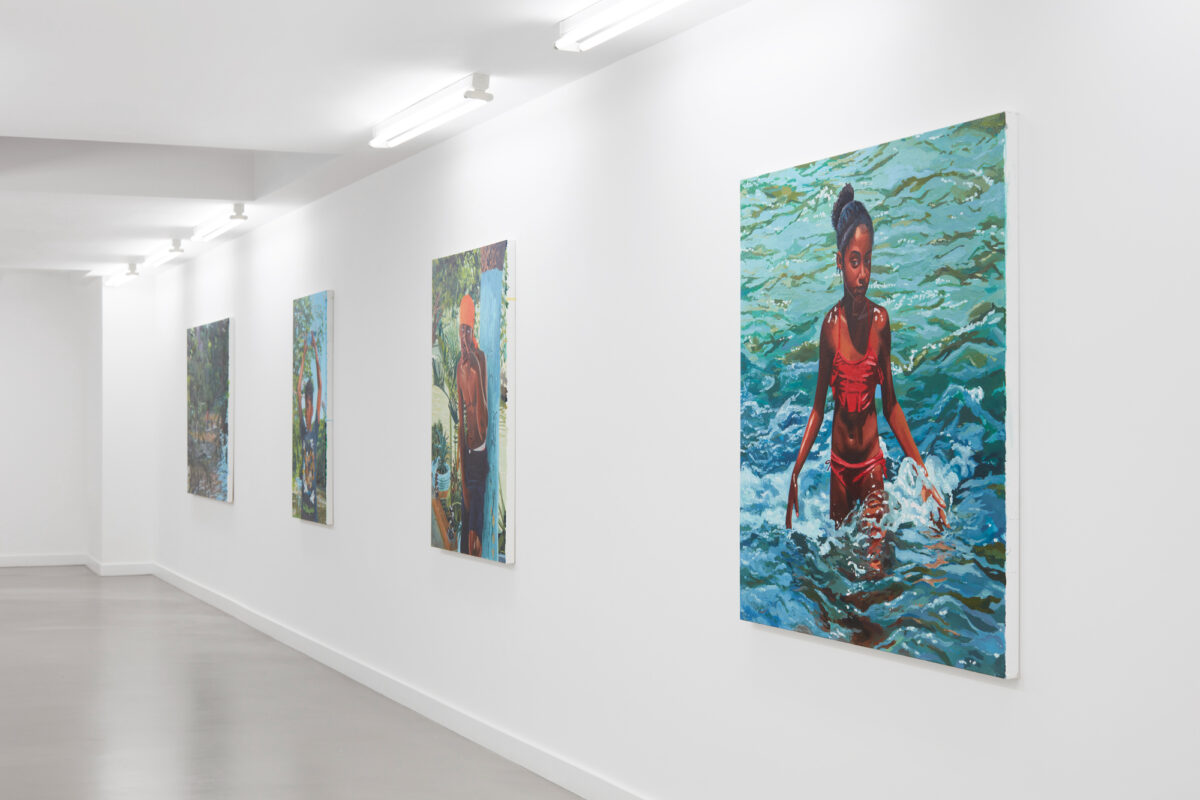
Raelis Vasquez –31st October 2023, PM/AM (First Floor), 37 Eastcastle Street, London W1W 8DR
